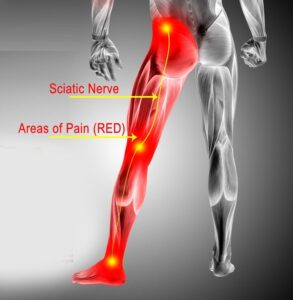The sciatic nerve experiences pinching, leading to sciatic pain, primarily caused by a herniated disk in the spine or bone spurs (extra growth of bone) on vertebrae. Additionally, spinal stenosis, characterized by a narrowing spine, can compress the spinal and sciatic nerves, while in some cases, the presence of a tumor may also lead to nerve compression. The most common clinical features include pain, inflammation, and numbness in the affected legs.
Herniated disks occur when the cartilage separating the vertebrae rips, allowing the substance inside to compress the sciatic nerve, resulting in low back pain and numbness in the lower limbs.
Spinal stenosis involves the abnormal narrowing of the spinal canal, putting pressure on the roots of the sciatic nerve and causing pain; it is also referred to as lumbar spinal stenosis.
Spondylolisthesis, an associated condition of degenerative disk complaint, occurs when one spinal bone or vertebra extends, leading to nerve pinching and sciatic pain.
Piriformis syndrome, a rare neuromuscular condition, occurs when the piriformis involuntary muscle contracts or tightens, pinching the sciatic nerve and causing sciatica pain. This syndrome is commonly observed in conditions involving falls, accidents, or prolonged periods of sitting.
